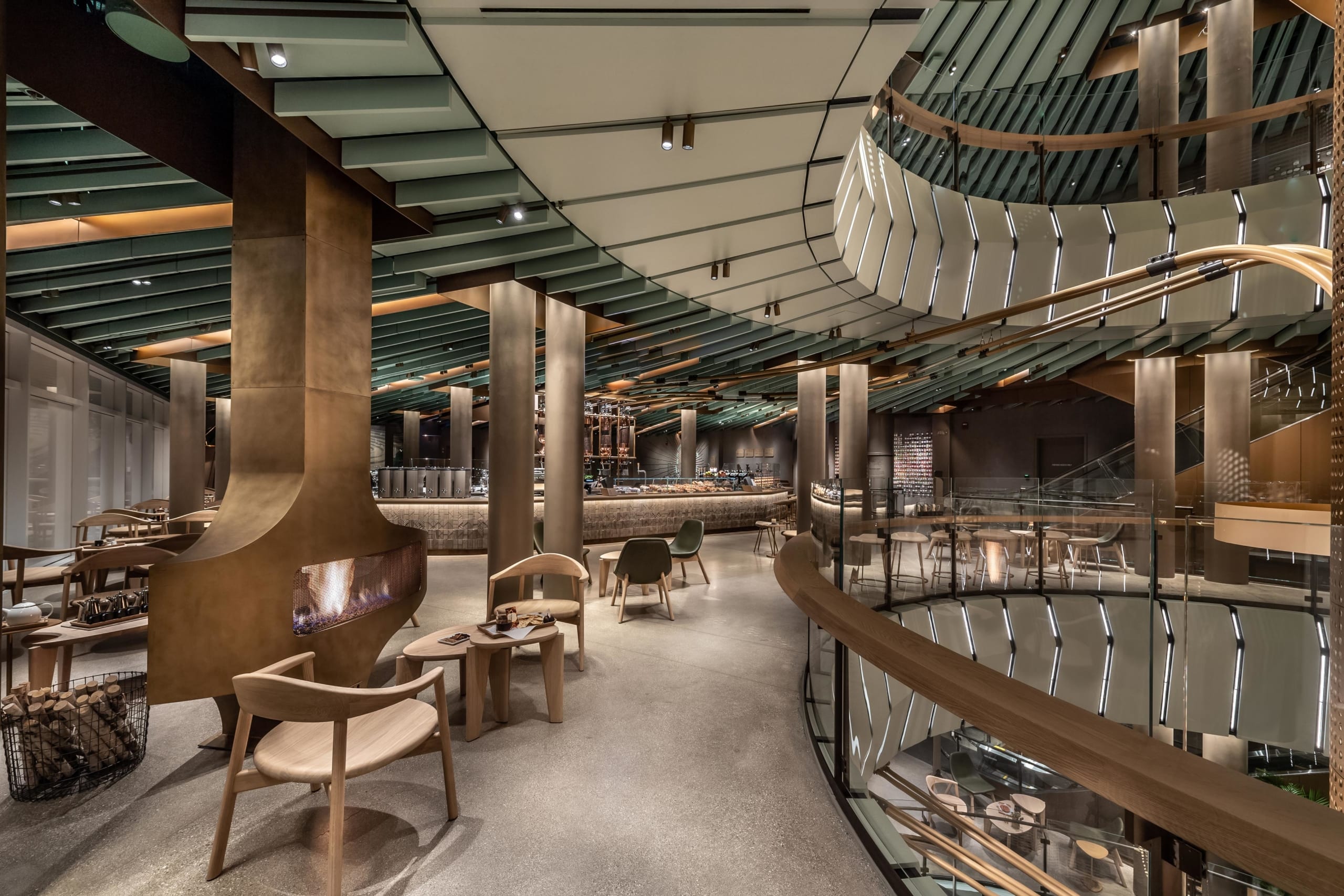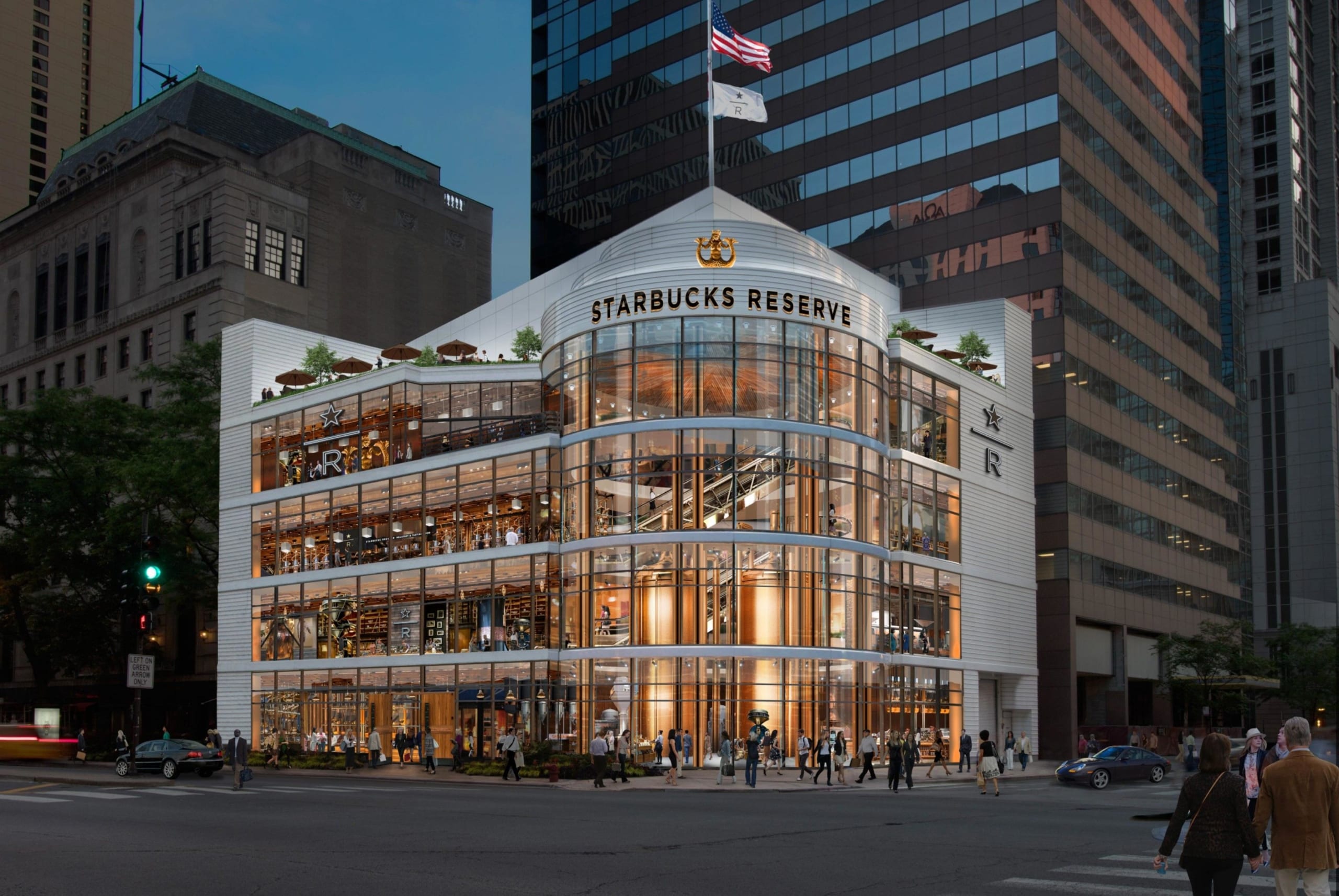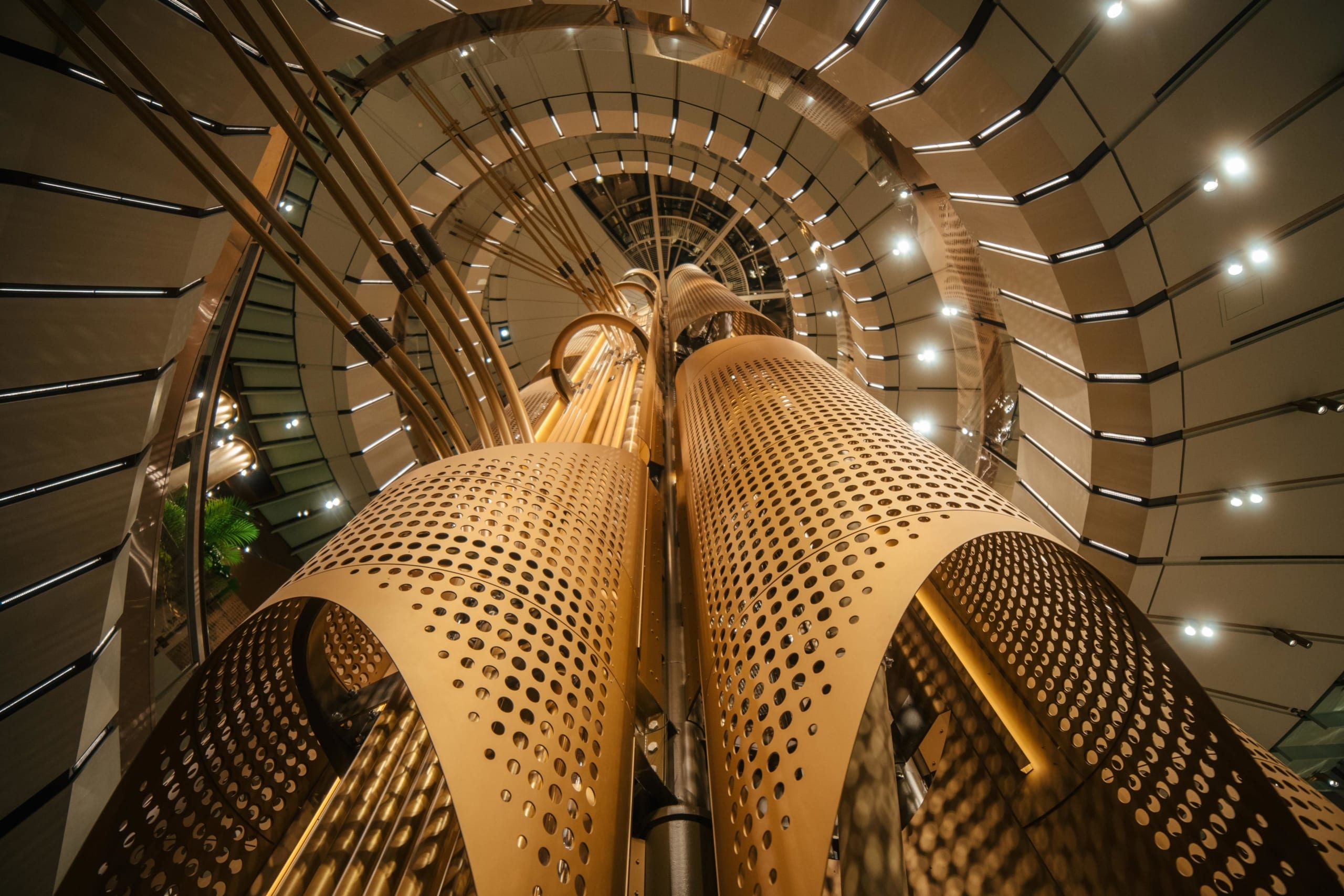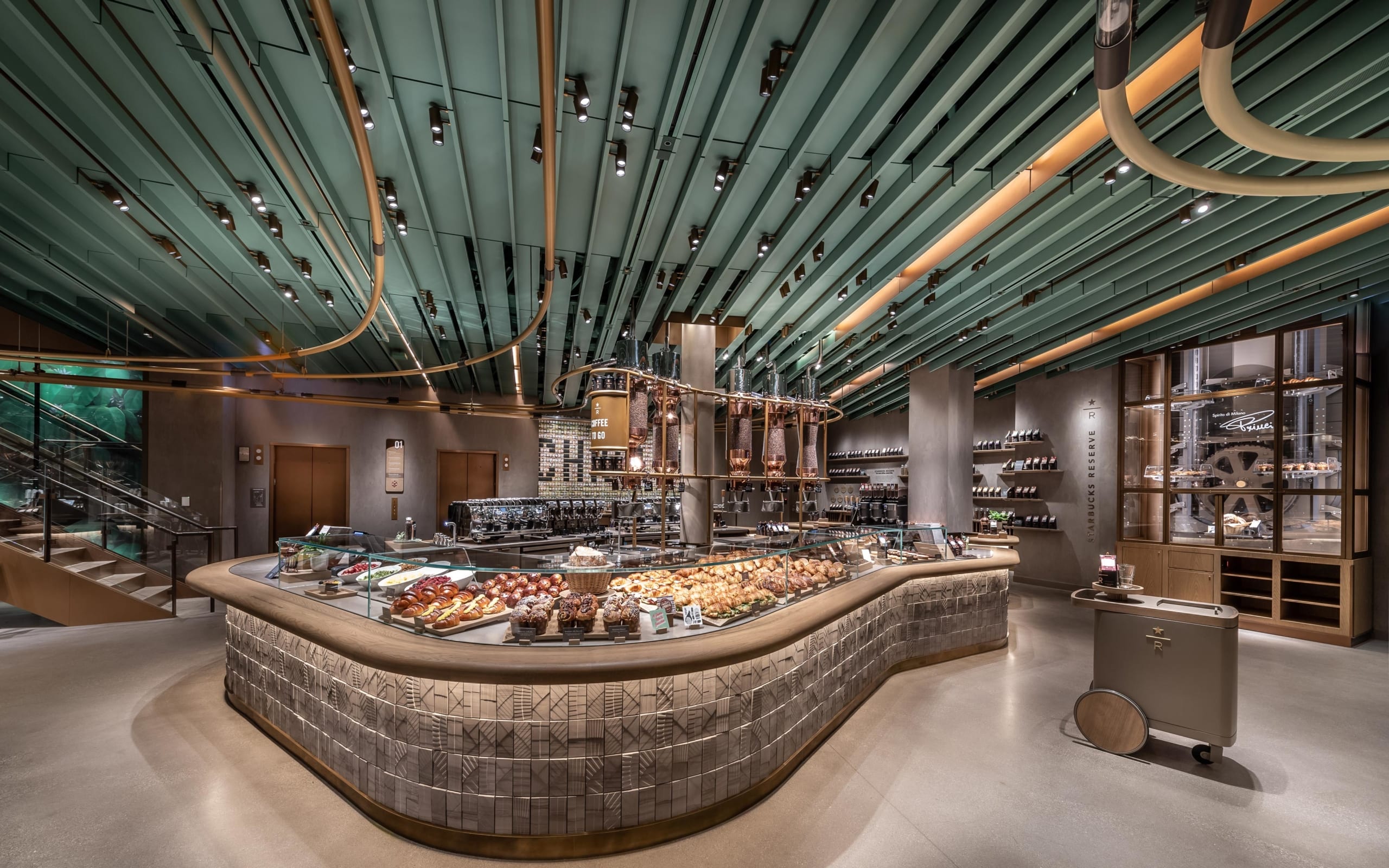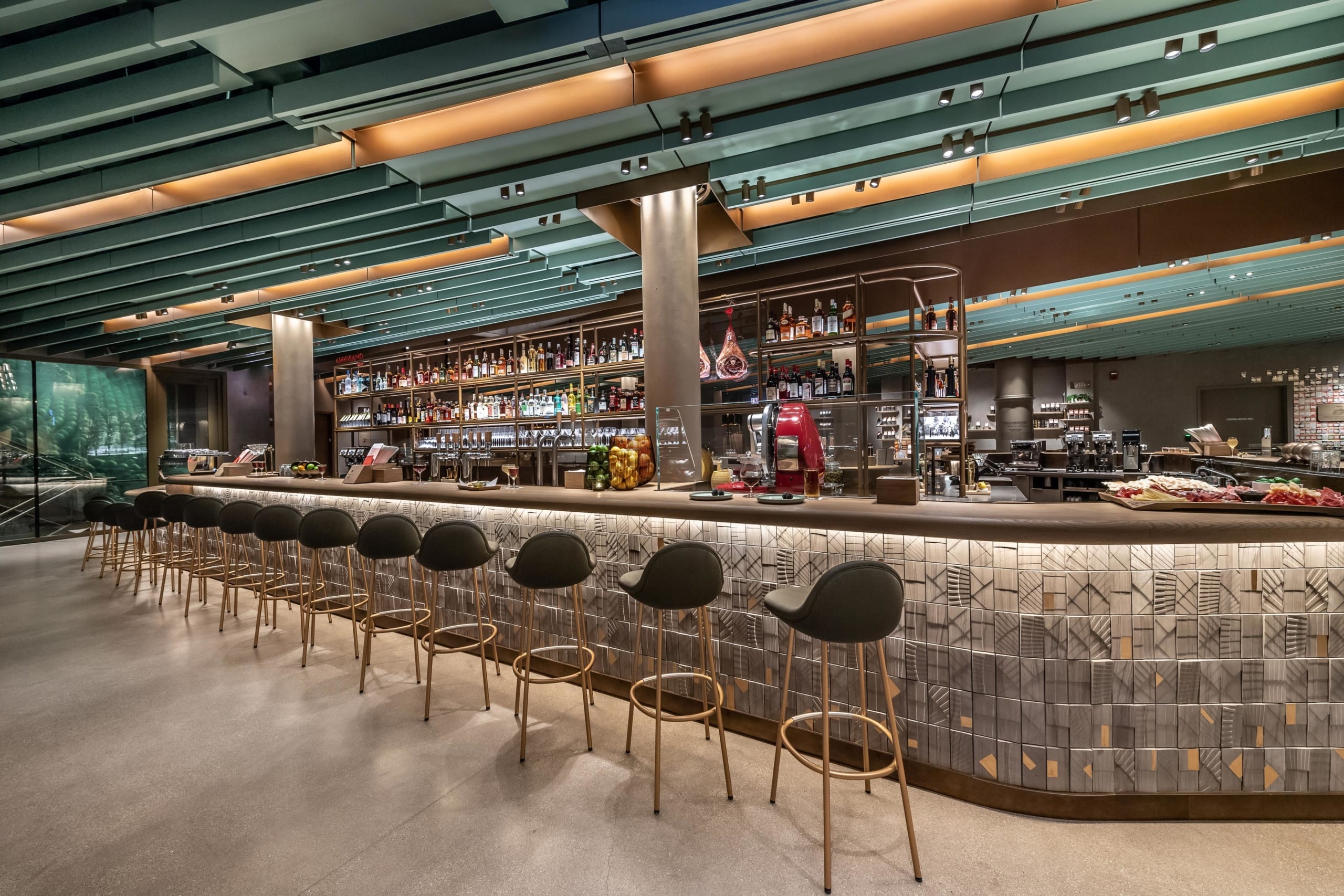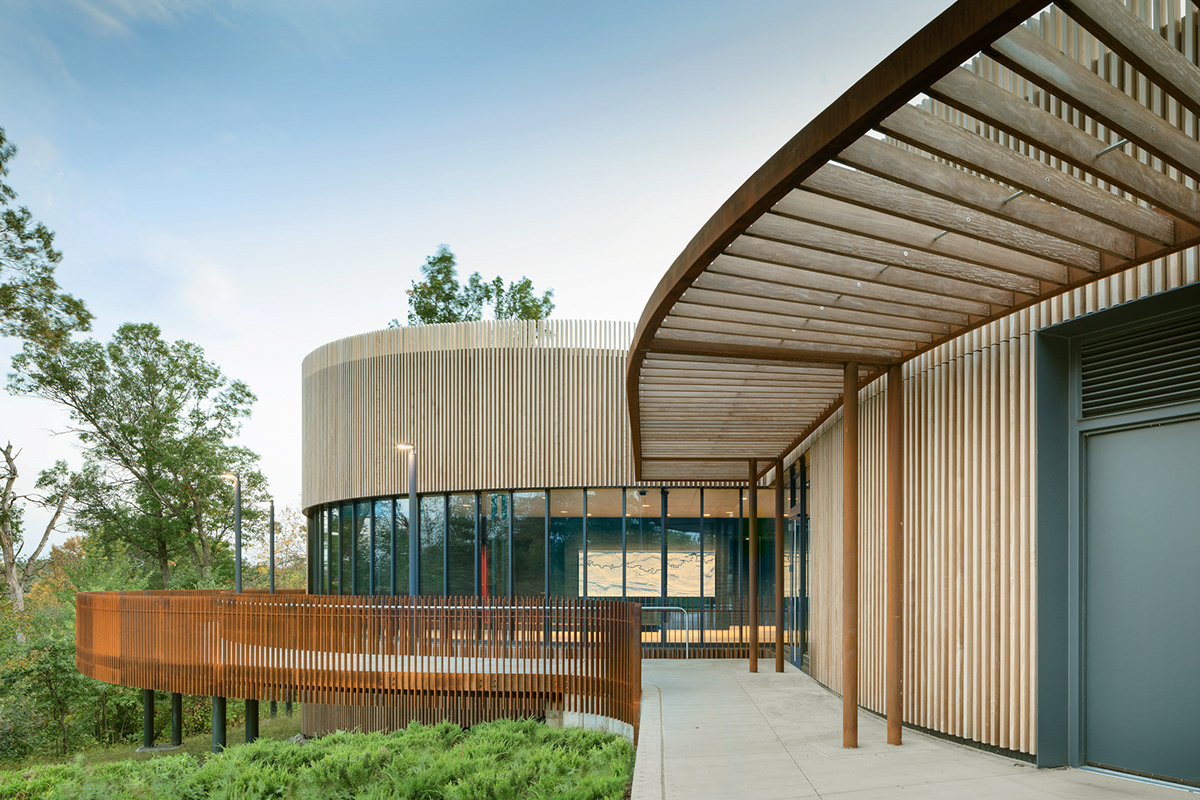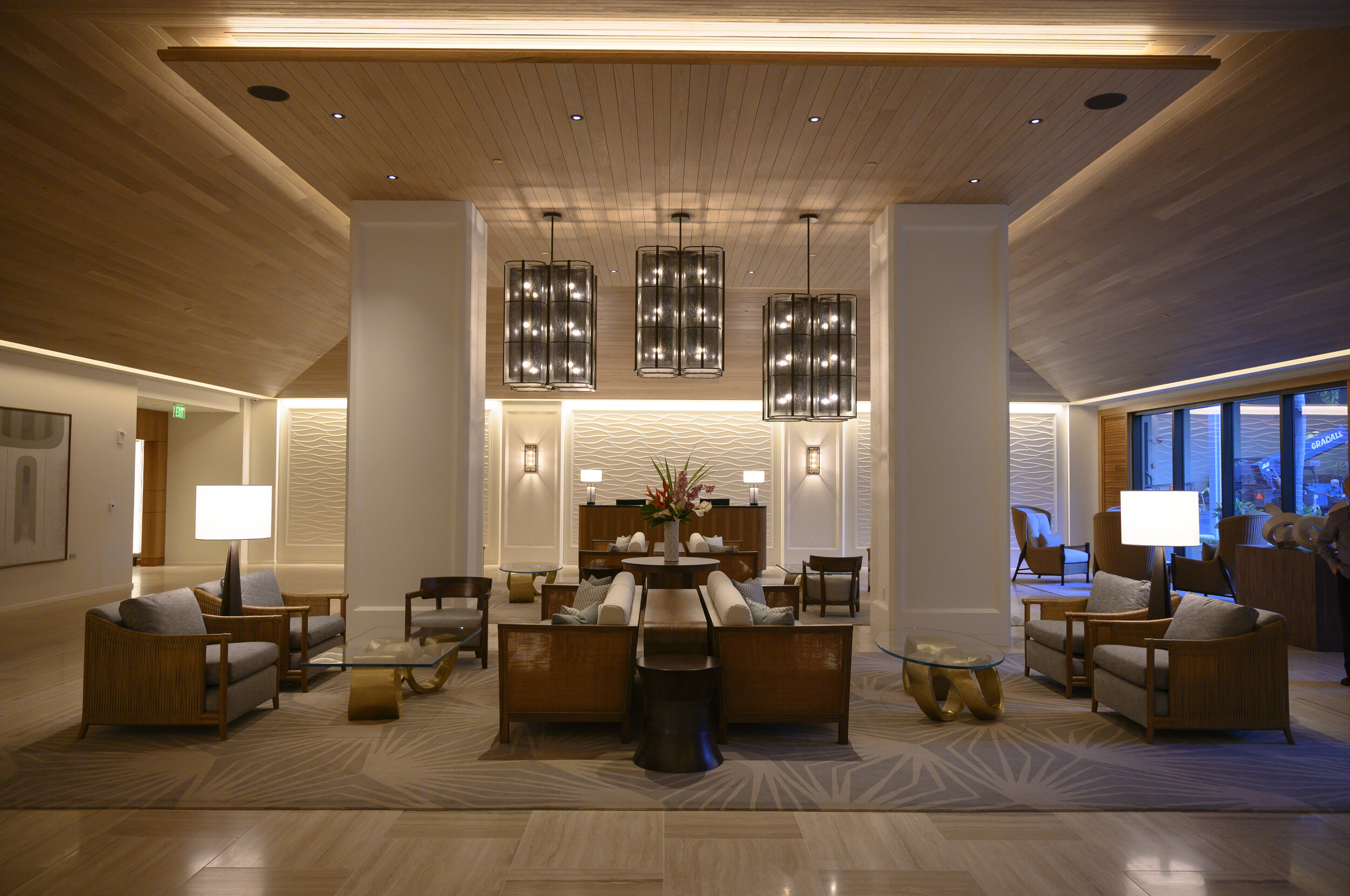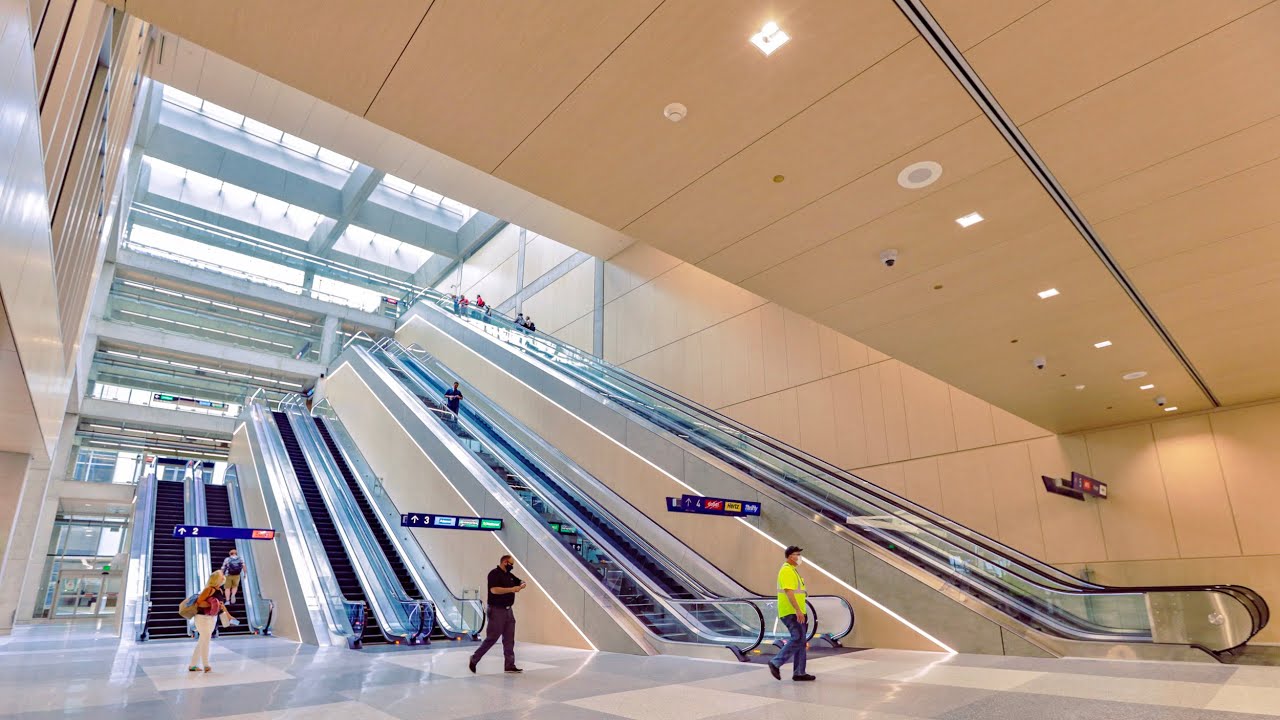The pressure was on Starbucks vice president, lead designer Jill Enomoto to create something extraordinary. Her task? Design the newest Starbucks Reserve Roastery on Chicago’s famous Magnificent Mile.
The iconic location in the former flagship Crate and Barrel building was a major investment and no small risk. It would be the largest Starbucks in the world with 35,000 square feet and five levels. For Enomoto, the greatest challenge would be to coax people past the first floor coffee bar.
Chicago is the 6th city to gain a Starbucks Reserve Roastery after Seattle, Shanghai, Milan, New York, and Tokyo.
Enomoto explains, “How do you create this magical experience where you can engage the customer on different levels… and ensure they don’t just walk in the front door and say, ‘Oh, I saw the roaster!”
Her creative solution was to draw customers’ eyes up to the 56-foot tall bronze coffee cask, curving escalator, four-story tall mural, and striking acoustic ceiling design.
The result is a gleaming, out of this world experience with a modern steampunk vibe. It’s been described as “an industrial-chic Willy Wonka factory for craft coffee lovers, cocktail aficionados and Chicago devotees” and “ five stories of coffee theater.”
Sunray Ceiling Design by SoundPly
Made from SoundPly’s acoustic panels, the green sunray ceiling is one of Enomoto’s favorite design features in the Roastery. “With the cask in the center and the way the ceiling radiates from there, it creates an almost optical illusion that the ceiling seems to tilt upward as you go up each floor towards the cask. And from the outside, you see this really great pop of color on each floor.”
It took artist Eulogio Ortega two months to paint the four-story mural next to the stairs, and one month to think through his idea for “the story of coffee.”
The sunray design also draws visual lines to the massive burnished bronze cask and curving escalator, subtly ushering customers up to experience each new level. To add to this effect, the ceiling panels are finished in five graduated shades of green. Darker shades are furthest from the cask and progressively lighten to a light grayish jade closest to the cask. The graduated color adds to the illusion that the ceiling is rising.
There’s a symbolic intent, as well. The ceiling was meant to represent the sun shining on rolling green hills covered with coffee trees. Its color ties in, not only with the Starbucks trademark green, but also with the stunning four-story mural painted by Eulogio Ortega telling the story of coffee as a tribute to the farmers who plant and harvest the beans.
Recreating the Signature Sound of Starbucks
The sunray ceiling isn’t just an integral part of the visual design, though. The acoustic ceiling panels help recreate the familiar Starbucks signature sound, but in a space 23x the size of their typical coffee shop and with thousands of more visitors.
It makes the Roastery acoustically comfortable, controlling the noise generated from:
- 8,000 daily visitors.
- Scores of staff calling out orders.
- Classes taught at the Experiential Coffee Bar.
- Enough espresso machines and coffee grinders for 8,000 daily guests.
- An estimated 547 pounds of coffee beans daily rattling through the metal pipes of the multi-story coffee cask.
Comedian Tim Hawkins made a song about “The Sound of Starbucks.”
To absorb the excessive noise, Starbucks chose SoundPly’s Alta Ceiling Panels with an RFM25 core. Because the core of SoundPly features a balance of porous and resonant sound absorption, sound absorbency actually increases with the volume of sound. We call it Dynamic Sound Control. It’s pretty amazing! And it takes what could’ve been a painfully loud experience—thousands of people and noisy machinery—and makes it inviting and memorable.
Gordan Segal, the founder of Crate and Barrel and original visionary for the flagship building, is pleased with the result. “Wonderful experiences, feelings, emotions in all your senses,” Segal said. “Your sight, your smell, your sound… it’s wonderful in a building like this.”
Project Information
Project Name
Starbucks Reserve Roastery, Chicago, IL
Architect
Lead Designer
Millworker
Product
SoundPly Alta Acoustic Ceiling Panels, 1" thick with an RFM25 core.
The Museum of Modern Art in NYC had a problem with noise. Learn how Cerami and Associates solved it using SoundPly: "Silencing the Critics: How the New MoMA Wins."
